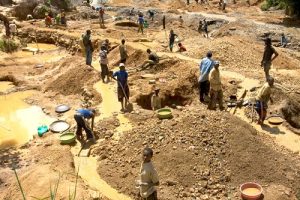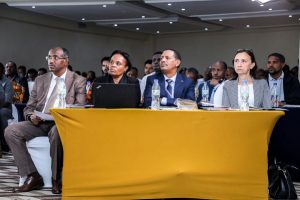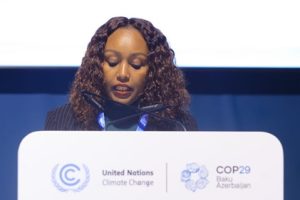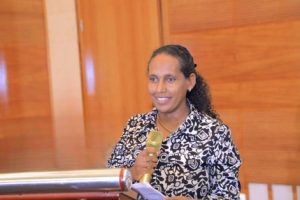
Lake Haramaya is located in the eastern highlands of Ethiopia, Eastern Harerghe Zone, in the Oromia regional state. One of Ethiopia’s most stunning and well-known lakes, the Lake provides food and shelter for a variety of gorgeous birds in the country’s eastern region. Additionally, locals host recreational activities and host weddings, public holidays, and other events at the lake.
Nevertheless, it dried and transformed into land. Children were playing football, animals were munching on grass, and agricultural activities were evident across the dry Lake area. For people of Haramaya and adjacent towns, primarily Aweday and Harer, the lake was their only supply of drinking water. Up until it dried up in 2005, it was also used for both industrial and agricultural uses.
Studies have demonstrated that the lake dried up as a result of excessive lake and groundwater pumping, environmental deterioration, and climatic changes. Before the lake dried up, it had a wide and lovely view, and both humans and animals drank from it. After it dried, residents had to dig a 20-meter-deep hole to access water since life became difficult without it.
Haramaya University (HU), one of Ethiopia’s oldest public universities, which is next to Lake Haramaya, prepared a project to restore the Lake after taking the issue into account. Additionally, it used the Lake as a demonstration place for teaching and learning, for agricultural researchers, and so forth.
The “Lake Haramaya Watershed Rehabilitation Project” was developed by HU with the primary goal of restoring the Lake, according to data from the university’s Community Engagement and Enterprise Development department. In particular, the HU actively participated in environmental preservation and restoration efforts to bring the Lake back.
Despite having a large financial need, HU found it difficult to obtain funding from domestic and international sponsors. So, HU decided to conduct the project on its own tight budget by concentrating exclusively on three of the seven components, namely improving product and productivity, soil and water conservation, and crop output and productivity.
In 2014, two years after the project’s inception, water began to enter the dried-up Lake Haramaya. When the university calculated that, out of the lake’s 600hec total size, water can cover 50hec, the recovered amount of water was 20 percent.
HU Integrated Lake Haramaya Watershed Development Project Coordinator Dine Rashid said to bring the lake back, the project was very necessary. HU has undertaken several research-based initiatives to conserve the ecology and carry out restoration work on the Lake.
Accordingly, HU specifically divided the lake’s catchment area into upper, middle, and lower riparian zones to bring the lake back. Along with soil conservation efforts, HU was able to plant more than 400,000 fruit and forest saplings per year in the upper basin. More than 300 cubic meters of gabions are built each year to repair and rehabilitate the land on damaged and hollowed-out areas in the center of the basin, he continued.
To prevent waste and garbage contamination in the areas near the lake, HU organizes a cleanup program twice a year in conjunction with university employees and members of the local community. Besides, the university is primarily providing training and material assistance to those farmers who reside near the lower base of the lake to increase their understanding of water use, management, and the necessity to utilize water responsibly.
This made it possible to completely restore the lake to its former state through a variety of difficult efforts, and the lake is now providing the community with a range of services by creating even job opportunities for young people, he explained.
Indeed, restoring the lake is important for the Haramaya people, the nation, and the entire world in terms of maintaining the ecosystem and reducing climate change effects. Because poor water management caused a significant difference between the amount of water pushed and the amount of water that entered the surface. The viability of the lake would be in doubt if the local community and farmers continued to indiscriminately transfer lake water to irrigation and farming.
Hence, it’s critical to support farmers in using water-saving irrigation techniques, and community involvement in defining the lake’s limits is essential to maintaining the water body. Moreover, along with its knowledge and expertise, HU’s experience and knowledge in restoring the lake should be shared with the rest of the nation since it inspires people to plant trees and raises awareness of the value of environmental and water bodies protection.
However, the lake gets its previous status, becomes the home of many birds, and gives various services to many people but the experience and process of bringing the lake should be expanded to other parts of the country.
According to Dine, HU gets ample experience and capacity that helped it to expand to others. Currently, it has planned another project, which encompasses Adile to Lake Dengogo, to broaden the information, experience, and skills gained at Lake Haramaya. The project helps the lakes to be utilized both in the winter and the summer.
Consequently, this has a favorable effect on the country’s water bodies and general environmental protection policy as well as the government’s green legacy programs, which are designed to safeguard the environment and benefit society.
Although there are challenges to lake conservation and protection, such as a lack of funding, delays in procurement, societal attitudes toward water use and management, etc., it is important to overcome these obstacles and is making a variety of efforts to spread the positive experience Lake Haramaya across the nation.
Furthermore, it is crucial to establish strong guidelines and norms for the distribution of water resources that would regulate and oversee the nation’s water management. To better share knowledge about water bodies’ protection and conservation across the nation, specifically with regard to Haramaya Lake, serious partnership activity between HU and the Ministry of Water and Energy should be performed.
A good example of a duty related to the preservation of soil and water bodies is the division of the catmint region into three sections and the annual planting of more than 400,000 fruit and forest tree seedlings. To restore the area of damaged and hollowed-out areas in the bay’s center, more than 300 cubic meters of gabions are produced annually.
Another significant lesson learned from the Haramaya Lake restoration effort is boosting farmers’ awareness of water use, management, and the need to use water sparingly, in addition to the regular watershed conservation work.
BY EPHREM ANDARGACHEW
THE ETHIOPIAN HERALD TUESDAY 15 AUGUST 2023





